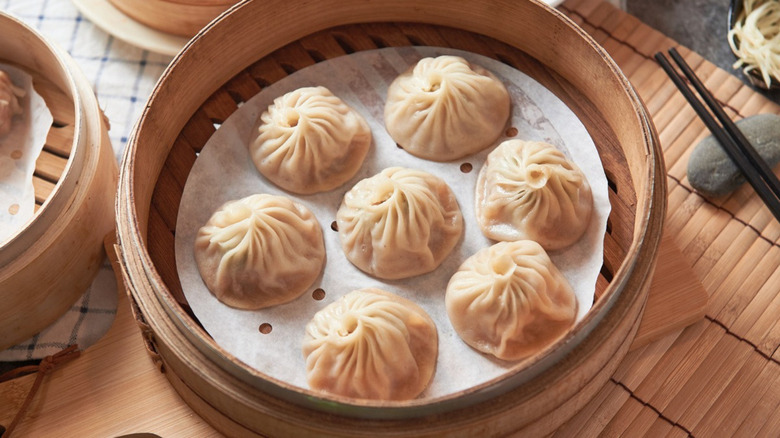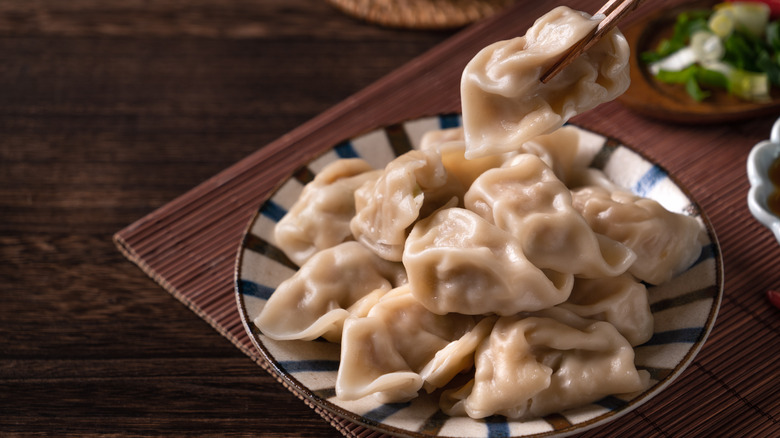Did Dumplings Originate In China Or Japan?
Universally enjoyed for their countless delicious forms and fillings, dumplings have a rich culinary history dating back to 1,800 years ago. Steamed, fried, boiled, or pan fried, these little flavor bombs are versatile enough to be stuffed with anything from savory meats, sauces, veggies, and even sweets. While it is true that the first ever recorded dumpling recipe was discovered in an ancient Roman cookbook, the idea was first conceptualized in China's Eastern Han Dynasty.
You might know them best as pot stickers, and have likely eaten them as a tasty appetizer or side dish at your favorite Asian restaurant. Although, they can be easily confused with Japanese gyoza, which was first created as recently as WWII and are generally always pan fried to crispy perfection. The difference between gyoza and pot stickers, or jiaozi in Mandarin, are usually prepared via other cooking methods like boiling or steaming, and have spawned many different variations across the world. Ravioli in Italy, creamy chicken and dumplings in the States, authentic Argentinian empanadas, and pierogis from Poland are just a few of the unique spin-offs of the original jiaozi.
It's one thing to know where the traditional Chinese dumpling was born, but it becomes even more interesting when there existed a man who is believed to have started it all. This medicine man from the Han Dynasty, named Zhang Zhongjing, is a celebrated figure in Chinese culture for inventing dumplings as a way to feed his hungry village.
According to legend, the first dumplings were made with mutton
Zhang Zhongjing's story tells of his return from a long journey, only to find his town had been plagued by a particularly harsh winter. Many of the villagers had frostbitten ears and needed something to warm them up from the inside out. What better food to do just the trick than the spicy kick of chili peppers? Zhongjing is said to have steamed some dumplings, which he folded to look like ears, fondly enough, that were stuffed with medicinal herbs, mutton, and chilis and served them with a hearty soup. The idea was to pack the dough with a bit of heat to help with blood circulation, which apparently worked, because many of those who had eaten his jiaozi had recovered.
He continued to deliver those miraculous dumplings to his village even after they were cured, and they loved the taste so much that they began making the dish themselves. Some believe the healer learned how to make jiaozi during his travels throughout other parts of Asia, but either way, Zhongjing was likely attempting to pad out smaller rations to feed more mouths. Introducing dough into the recipe and other ingredients makes for a much more filling meal than meat alone.
One thing's for sure, and it's that dumplings are a unifying food that every corner of the world can appreciate and enjoy together. Whether you cook frozen dumplings or fold them together from scratch, there's always an appetizing way to savor their many flavors.

